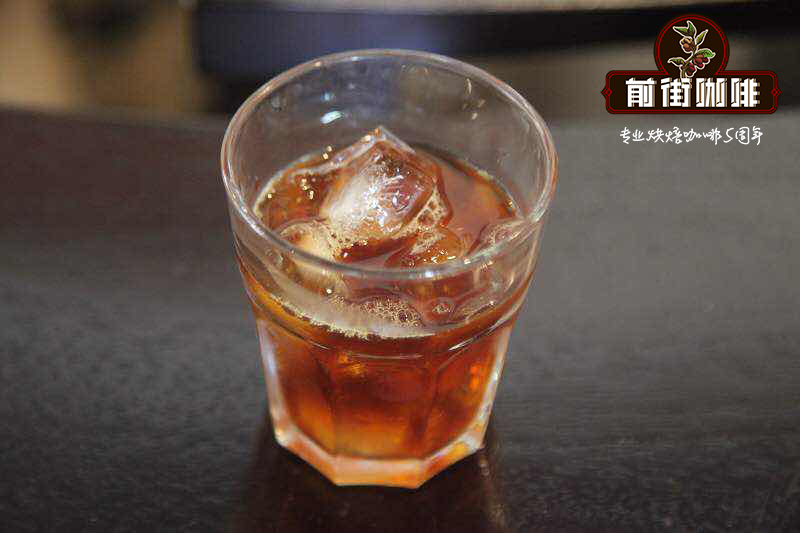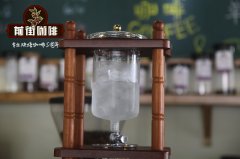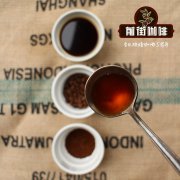Famous coffee producing area in Africa | the producing conditions of Kenyan coffee breed the smell of sour fruit.

Professional coffee knowledge exchange more coffee bean information please follow the coffee workshop (Wechat official account cafe_style)
Qianjie-African Coffee producing area brief introduction of Kenya Coffee producing area
The Kenyan boutique coffee industry is different from the general, mostly in the form of a combination of small farmers, wet treatment plants and cooperatives. Farmers will send the harvested coffee cherries to nearby processing plants or cooperatives in the shortest possible time. At the same time, cooperatives also regularly send staff to tutor local farmers to ensure that each producer has professional planting skills to maintain the quality of coffee.
The history of coffee cultivation in Kenya can be traced back to the end of the 19th century. Coffee trees were introduced from neighboring Ethiopia in the north and improved by their own varieties. At present, the common varieties are Bourbon, Kents,SL34, SL28, Typica and Riuri 11. Now about 90% of the coffee varieties are SL34 and SL28.
The new variety Batian published in 2007 has not been planted in large quantities. The vast majority of Kenyan coffee is grown organically without certification because of the use of improved planting techniques and the rare use of chemical pesticides or herbicides. All high-end coffee in Kenya is washed, while the low-grade products of sun-dried beans (non-washed buni) are for local use only.
The most important feature of Kenyan coffee is its obvious acidity, which at the same time brings obvious fruity and raspberry aromas. it can be called a heavy taste grade, and those who like it will fall in love with it. The most common Kenya coffee has flavors such as black plum juice and Luoshen scented tea. If you don't like these flavors, you should stay away!
Around Mount Kenya (MT. KENYA, volcano) and Elgang Mountain (MT. Elgon), the more famous producing areas are Meru, Thika, Nyeri, Nakuru, Embu and so on. The topography of Kenya is complex and changeable, with plateaus, deserts, canyons and grasslands. Coffee producing areas are spread all over the central and southwestern and eastern plateaus at elevations of 1000 to 2500 meters, such as Mount Kenya in the middle, Aberdare Zone in the west, Nyanza, Kasii and Bungoma in the west, and Kericho and Nakuru in the east. The treatment method of raw bean is mainly water washing, the grading method is graded by particle size, and its practical value is determined by cup test.
The highest grade coffee beans are AA (large granulated beans left on the 7.2mm screen), A (the second largest granulated beans left on the 6.8mm sieve), B (medium granulated beans left on the 6.2mm sieve), C (all small granules less than B), PB (oval granulated beans), and TT and T beans that are too light and too small. Grade An and B beans are mixed and exported, called AB. The Kenyan authorities (CBK) are very demanding on coffee beans, using consistent packaging, coupled with good quality and good texture, so coffee lovers will never forget to enjoy a cup of Kenyan coffee.
Knowledge expansion: washing will brighten the acidity of coffee beans and reflect rich fruit flavors. Kenyan coffee with bright fruit aromas and acidity is regarded as a favorite product of many people in the coffee industry. Kenyan coffee has thus won the reputation of "cup of connoisseurs".
In short: Qianjie is a coffee research hall, happy to share the knowledge about coffee with you, we share unreservedly just to make more friends fall in love with coffee, and there will be three low-discount coffee activities every month. The reason is that Qianjie wants to make more friends drink the best coffee at the lowest price, which has been Qianjie's tenet for 6 years!
END
Important Notice :
前街咖啡 FrontStreet Coffee has moved to new addredd:
FrontStreet Coffee Address: 315,Donghua East Road,GuangZhou
Tel:020 38364473
- Prev

Extraction parameters of espresso how Colombian coffee beans make espresso
Professional coffee knowledge exchange more coffee bean information please follow the coffee workshop (Wechat official account cafe_style) espresso extraction guidelines it is best to use 7-20 days after baking extraction of espresso powder 20.5g coffee solution weight 40g extraction time 26 to 29 seconds temperature 93.5C END
- Next

Which countries in Africa produce coffee? Kenyan boutique coffee producing area bright sour complex flower and fruit aroma
Professional coffee knowledge exchange more coffee bean information please follow the coffee workshop (Wechat official account cafe_style) front street-African coffee producing area brief introduction of Kenyan coffee producing areas no country in the world attaches as much importance to the production of high quality coffee as Kenya, so Kenya can be called the best model student in the world coffee producing countries, because all Kenyan coffee must be handed over after harvest.
Related
- Beginners will see the "Coffee pull flower" guide!
- What is the difference between ice blog purified milk and ordinary milk coffee?
- Why is the Philippines the largest producer of crops in Liberia?
- For coffee extraction, should the fine powder be retained?
- How does extracted espresso fill pressed powder? How much strength does it take to press the powder?
- How to make jasmine cold extract coffee? Is the jasmine + latte good?
- Will this little toy really make the coffee taste better? How does Lily Drip affect coffee extraction?
- Will the action of slapping the filter cup also affect coffee extraction?
- What's the difference between powder-to-water ratio and powder-to-liquid ratio?
- What is the Ethiopian local species? What does it have to do with Heirloom native species?

